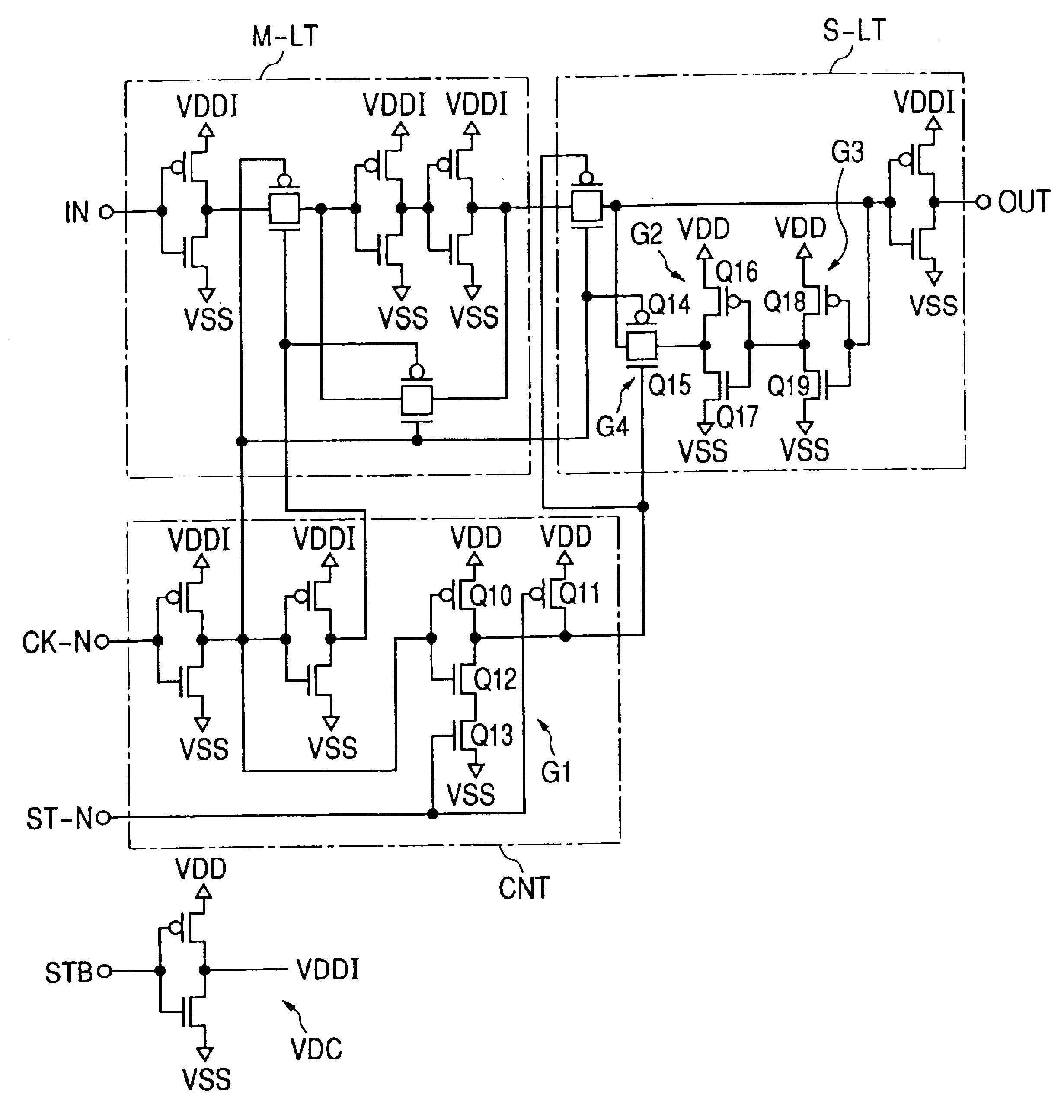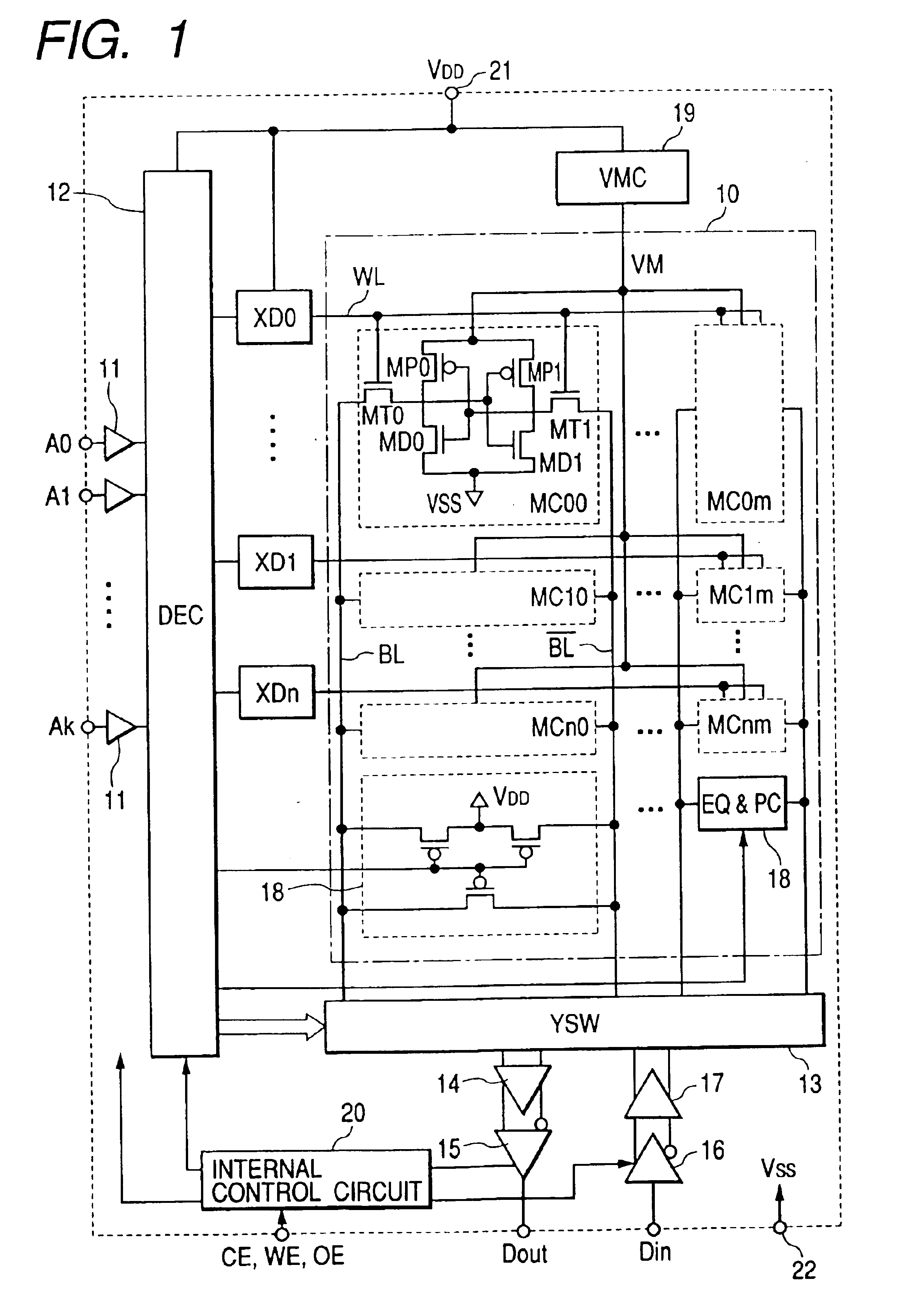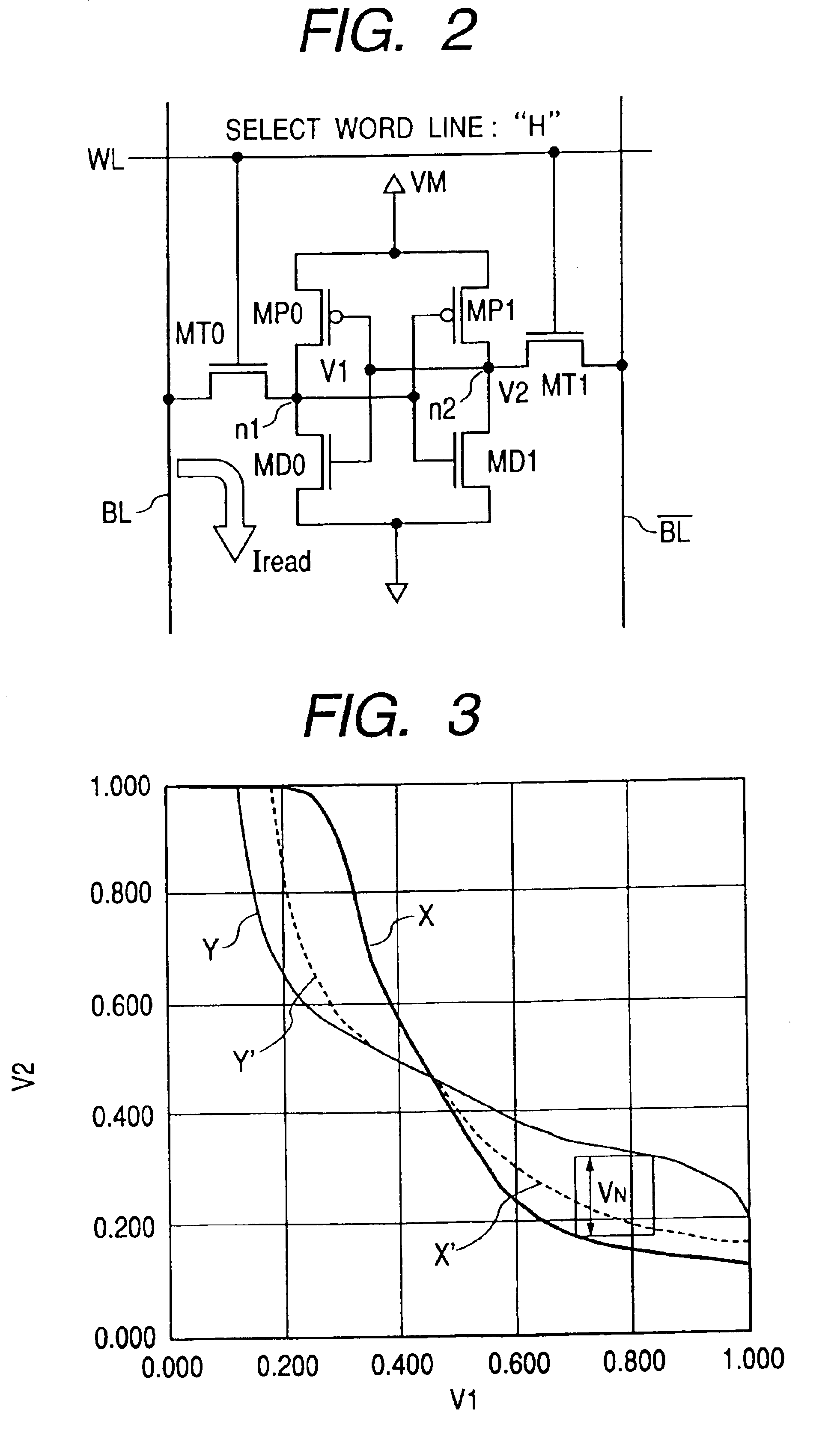Semiconductor memory device
a memory device and semiconductor technology, applied in semiconductor devices, digital storage, instruments, etc., can solve the problems of increasing the power consumption of the whole chip, the inability to make fast read rates, and the increase of the current consumption so as to reduce the leakage current of the memory cell, the operating speed of the peripheral circuit can be made fast, and the power consumption can be reduced
- Summary
- Abstract
- Description
- Claims
- Application Information
AI Technical Summary
Benefits of technology
Problems solved by technology
Method used
Image
Examples
first embodiment
[0039]In the first embodiment, a booster or step-up circuit 19 for boosting the source or power supply voltage VDD like 0.6V supplied to the power supply terminal 21 from outside and generating a boost voltage VM like, e.g., 1.2V is provided. Along with it, the boost voltage VM generated by the step-up circuit 19 is applied to a source or power-supply voltage terminal of the memory array 10, i.e., source terminals of P-MOSs MP0 and MP1 of each memory cell MC as an operating voltage. Incidentally, a ground potential VSS is applied to source terminals of N-MOSs MD0 and MD1 of each memory cell MC.
[0040]On the other hand, the external power supply voltage VDD is applied to source or power-supply voltage terminals of peripheral circuits such as the address decoder 12 and word drivers XD0 through XDn except for the memory array 10 as an operating voltage. Except for at standby, i.e., upon read and write, all the word lines WL in the memory array 10 are respectively brought to a low level ...
second embodiment
[0056]Further, gate insulating films for the MOSFETs MT0, MT1; MP0 and MP1; and MD0 and MD1 constituting the memory cell MC, and high voltage-applied MOSFETs (P-MOSs) of MOSFETs constituting the word drivers XD0 through XDn are formed so as to become thicker than a gate insulating film for MOSFETs constituting other peripheral circuits such as a decoder circuit 12 in the Thus, even if the boost voltage VM is applied to source terminals of these MOSFETs, such a withstand voltage as not to degrade the gate insulating film is given.
[0057]FIG. 7 shows parts of the decoder circuit 12 and the word drivers XD0 through XDn. DEC indicates a unit decoder comprising NAND gates with internal address signals ai and ai+1 as input signals, and INV indicates an inverter for inverting an output thereof. Although not restricted in particular in the second embodiment, word lines are respectively formed as hierarchical configurations each of which comprises a main word line MWL and a plurality of sub ...
PUM
 Login to View More
Login to View More Abstract
Description
Claims
Application Information
 Login to View More
Login to View More - R&D
- Intellectual Property
- Life Sciences
- Materials
- Tech Scout
- Unparalleled Data Quality
- Higher Quality Content
- 60% Fewer Hallucinations
Browse by: Latest US Patents, China's latest patents, Technical Efficacy Thesaurus, Application Domain, Technology Topic, Popular Technical Reports.
© 2025 PatSnap. All rights reserved.Legal|Privacy policy|Modern Slavery Act Transparency Statement|Sitemap|About US| Contact US: help@patsnap.com



